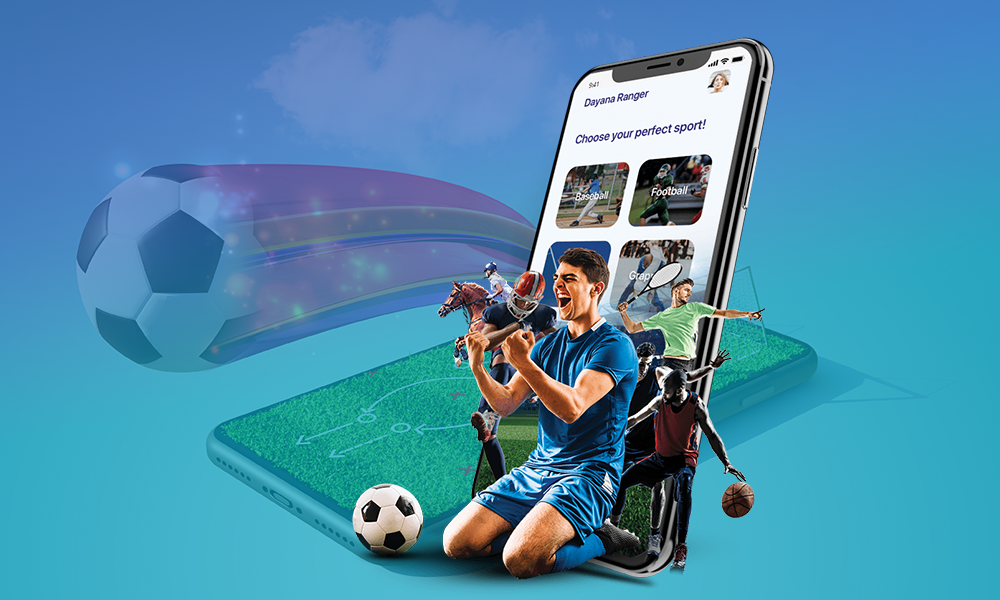Introduction: Fantasy Sports – A New Age Digital Revolution
In the digital era, fantasy sports apps have emerged as a revolutionary medium for sports enthusiasts to interact with real-world games. These platforms empower fans to create virtual teams, strategize their moves, and compete against others in real-time. As digital sports engagement increases, businesses are exploring fantasy sports app development as a lucrative opportunity to monetize fan engagement. A well-built fantasy app not only attracts heavy user traffic but also offers multiple revenue streams. However, to stand out in a competitive market, your app must be feature-rich and user-centric.
Below are 12 essential features every fantasy sports app must include to deliver a seamless and immersive user experience.
1. User Registration and Profile Management
A secure and frictionless registration process is the first step to acquiring users. This feature enables users to register using email, phone, or social media logins like Google or Facebook. Once logged in, users should be able to create and manage their profiles, update preferences, and track their fantasy stats. Easy onboarding leads to better conversions and reduces bounce rates for first-time users.
- Multiple sign-up options (email, phone, Google, Facebook)
- Easy login and logout
- Profile management features (avatar, favorite teams, stats)
2. Live Match Integration and Real-Time Updates
Live data is the heartbeat of fantasy gaming. Real-time integration ensures that users receive instant updates on player performance, match results, and points tally. APIs can sync with live match feeds to display up-to-the-second stats. This enhances competitiveness and keeps users glued to the app during live events, increasing session duration.
- Live scores
- Player stats
- Injury updates
- Match status
3. Contest Creation and Join Options
Users must be able to participate in or create different types of contests based on their preferences. The app should support public contests, private leagues, head-to-head matchups, and multi-user tournaments. Adding flexible entry fee options and contest rules makes the app more interactive and inclusive for both casual players and seasoned strategists.
- Daily, weekly, or season-long contests
- Head-to-head or multi-user leagues
- Cash and non-cash contests
4. Player Information and Statistics Dashboard
Detailed player profiles and performance analytics help users make strategic decisions. This feature should include stats like recent form, average points, injury status, and head-to-head records. Having access to relevant data directly within the app adds value and encourages smarter gameplay, increasing user satisfaction and competitiveness.
- Current form and past performance
- Injury records
- Fantasy points history
5. Team Creation and Editing Tools
Team building is a core feature that allows users to select their lineup from available players within a fixed budget. The tools should offer drag-and-drop functionality, captain/vice-captain selections, and easy team edits before match lock. An intuitive interface for team selection enhances usability and makes the experience enjoyable and smooth.
- Select players within a set budget
- Designate captains/vice-captains
- Make last-minute edits before the deadline
6. Leaderboards and Scoring System
To foster healthy competition, the app should display real-time leaderboards showing ranks, points, and prize eligibility. The scoring system should be transparent, with points awarded for player actions (goals, runs, catches, etc.). Leaderboards not only encourage players to keep checking in but also provide bragging rights, enhancing social appeal.
- Real-time leaderboards
- Transparent point system
- Tiered rankings with prize distribution
7. Secure and Multiple Payment Gateway Integration
Fantasy apps involve money transactions, so integrating secure payment gateways is essential. Users should be able to deposit money, join paid contests, and withdraw winnings seamlessly. Supporting various payment methods like UPI, net banking, credit/debit cards, and wallets ensures accessibility and trustworthiness, especially with regional compliance.
- Multiple payment modes (cards, wallets, UPI, net banking)
- Instant withdrawal options
- Compliance with regional gambling laws (KYC, AML, etc.)
8. Push Notifications and Alerts
Push notifications keep users engaged and informed. Notify users about upcoming matches, contest results, team updates, and personalized offers. Smart notification strategies can re-engage inactive users, remind them of lineup deadlines, and deliver real-time updates during gameplay. This helps boost retention and increases daily active usage.
- Contest start and end reminders
- Line-up changes or injury alerts
- Reward announcements
9. Refer and Earn Loyalty Program
A well-designed referral program helps organically grow your user base. Allow users to invite friends using unique codes and reward both the inviter and invitee. Track referrals through dashboards and offer incentives like bonus cash, points, or merchandise. This low-cost user acquisition model also enhances brand loyalty and advocacy.
- Reward users for inviting friends
- Use unique referral codes
- Track referrals in dashboard
10. Admin Panel and Content Management System (CMS)
The admin panel serves as the control center of your app. From managing user accounts, contests, payments, and player stats to updating content, the CMS makes it easy to monitor and control operations. A robust backend reduces maintenance overhead and allows your team to update the app in real-time without technical intervention.
A powerful backend helps manage:
- Users and contests
- Player database
- Payments and transactions
- Content like FAQs, news, blogs
11. Multi-Sport Support
Limiting your app to one sport restricts growth. Offering fantasy formats for cricket, football, basketball, kabaddi, and other popular sports expands your reach. Multi-sport capability ensures year-round engagement, as users can switch between sports depending on the season or major leagues, thus boosting retention and revenue.
Don’t limit your app to one sport. Offer fantasy options for:
- Cricket
- Football (soccer)
- Basketball
- Baseball
- Kabaddi and more
12. Social Sharing and Community Features
Adding social features creates a sense of community within the app. Let users share team results, leaderboard positions, or invite friends via social platforms. Group chats, in-app messaging, and fan forums enhance the interactive experience. Social engagement increases app stickiness and helps spread word-of-mouth organically.
Encourage users to:
- Share their teams or rankings
- Chat with other players
- Join fan communities
Futuristic Features: The Future of Fantasy Sports
Incorporating emerging technologies can give your fantasy sports app a competitive edge and position it as an industry leader. Here are the next-gen features to consider:
1. Artificial Intelligence (AI)
AI can personalize user experience by recommending players, predicting match outcomes, and analyzing opponent strategies. It can also detect fraudulent behavior and automate contest recommendations based on past activity.
2. Augmented Reality (AR) & Virtual Reality (VR)
AR allows users to visualize player stats, draft boards, or game simulations in 3D. VR can recreate immersive matchday experiences, including virtual draft rooms or fan zones, increasing immersion and novelty.
3. Blockchain Integration
Blockchain ensures transparency in prize distribution and can facilitate peer-to-peer gaming. You can also introduce crypto wallets, smart contracts for payouts, and NFT collectibles of star players or teams.
4. Voice Assistant Integration
Voice-activated features using AI assistants like Alexa or Google Assistant can allow users to check team status, set reminders, or get live updates—hands-free and on the go.
How to Choose the Right Features for Your Fantasy Sports App
The success of your fantasy sports platform heavily depends on how well you align features with your target audience. Here’s how to make smart feature choices:
1. Know Your Audience
If you target casual fans, focus on easy UI/UX, quick contests, and fewer technical stats. For serious fantasy players, include advanced analytics, multi-entry contests, and AI-based recommendations.
2. Competitor Analysis
Study what popular fantasy sports apps in your niche are offering. Evaluate their user flow, UI, features, and what users are requesting through reviews. Use this data to identify gaps and innovate.
3. MVP First, Scale Later
Start with a minimum viable product (MVP) to test the core functionality and user interest. Once validated, expand features based on user feedback and engagement metrics.
4. Partner with the Right Developers
Choosing an experienced fantasy sports app development company ensures your app has strong architecture, secure payment systems, and scalable tech stacks that can support evolving feature sets.
Conclusion: Features Are the Foundation of Fantasy Sports Success
In the hyper-competitive fantasy sports landscape, the difference between a mediocre app and a market leader lies in feature design and execution. The right feature set improves engagement, enhances gameplay, and directly contributes to monetization. From real-time match updates to social communities and futuristic technologies like AR and blockchain, every feature plays a strategic role.
To ensure your fantasy sports app succeeds, invest in thoughtful planning, user research, and skilled fantasy sports app development services. Hire developers in india from top app development company Arka Softwares. Because in the world of fantasy sports, features aren’t optional—they’re your game plan to victory.



